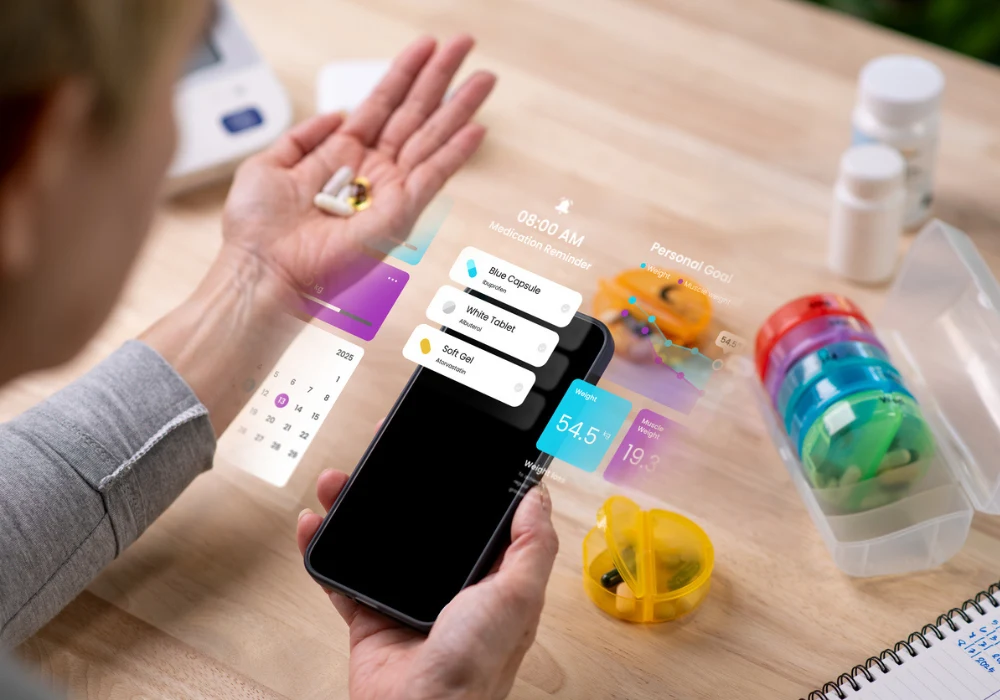People worldwide rely on prescription and over-the-counter medicines to manage pain, treat acute or chronic symptoms and achieve better health outcomes. Many products are made in pill form for portability and ease of use, yet busy schedules and forgetfulness mean doses are often missed. Purpose-built reminders aim to reduce that gap by giving clear cues about what to take and when. Options span simple visual trackers, tactile devices and electronic systems with alarms or apps. Some products emphasise visibility in the home while others focus on portability for travel or short-term regimens. Together they provide practical ways to keep medication routines on track so users are more likely to experience the intended benefits of treatment.
Visual and Tactile Trackers for Straightforward Routines
Several non-electronic solutions prioritise clarity without adding complexity. One bottle-mounted tracker uses a colour-coded slider to indicate daily status immediately, with red showing a dose has not been taken and green showing it has. Additional sliders can support multidose regimens, and a durable adhesive can remain effective through at least 12 refills, allowing the tracker to be moved between containers as needs change.
For households that want a reminder in a shared space, a wall or stand-mounted board presents two vertical columns of sliders to support morning and evening dosing. It is designed to be placed in visible locations, includes a stand for flat surfaces, a wall-safe mounting strip and operates without batteries. Some versions include stickers aligned to popular daily goals such as drinking enough water or meditating, with space to add names so individuals can personalise their routine. This approach combines visibility with a consistent daily rhythm.
Must Read: A Patient-First Future: The Rise of Personalised Concierge Medicine
Tactile feedback can also reinforce memory. A bottle-neck loop device presents a row of buttons that are pressed down after each dose, then pushed up the opposite way to reset for the following week. Raised letters or numbers on each button help distinguish positions by touch, and the system supports up to three daily doses. For people who find physical checks more reliable than sound or screen-based prompts, this method offers a low-effort way to record dosing without changing containers or relying on electronics.
Alarms, Timing Prompts and Bottle-Integrated Cues
When audible prompts are essential, dedicated alarm-based devices can bring structure to the day. A talking medication clock announces the time of day and the date when an alert sounds, supporting users who benefit from clear context with each reminder. Loud and extra-loud settings help the sound carry through a home. Up to four alerts can be set, which is useful for those who tend to overlook the first prompt. A backlit display improves legibility at night, and once an alarm is acknowledged the clock informs the user when the next dose is due. These features address common barriers such as inaudible alerts, missed prompts and uncertainty about what comes next.
For people who prefer to keep medication in a familiar bottle, a bottle-cap timer replaces the standard cap with one that integrates an alarm and a small display. Users can schedule 24 alerts per day. When an alert triggers it sounds for 10 seconds, and the display flashes until the cap is opened, tying acknowledgement directly to the act of accessing the medicine. The screen shows the last time and day the bottle was opened, which can help users verify whether a dose has already been taken before repeating it. This bottle-centred approach can reduce skipped doses and help build consistent routines without changing the underlying container.
Missed medication does not only affect personal health. Wasted pharmaceuticals can enter waterways and influence aquatic and land animals, including through hormone disruptions. While larger-scale mitigations exist, such as advanced filtration at wastewater treatment plants and denaturing kits that break down medicines, the most immediate lever in the home is reducing preventable waste at the source. By supporting timely use, alarm-based reminders and bottle-integrated prompts can help limit unused pills and the downstream risks associated with improper disposal.
App-Enabled Organisers and High-Capacity Dispensers
People who use smartphones to manage calendars and routines may prefer organisers that pair with an app. A compact weekly pill box with a companion application provides compartments for seven days, which suits travel and short-term courses prescribed for sudden infections. Users can choose from several colours to align with personal preferences. A lithium battery can power the device for up to a month between charges, and week-long custom plans allow schedules to be set once and followed over the next seven days. For time-bound regimens, this combination of portability and planning can reduce friction during busy weeks.
Where dosing complexity is higher, an automatic system that centralises storage and timing can reduce errors tied to juggling multiple bottles. A 28-day electronic organiser keeps weekly doses in a single device with a digital clock at the centre. It can be configured for up to six doses each day. At the scheduled moment the timer rings and the display flashes, guiding the user to the correct compartment. Each of the 28 sections can hold up to 18 pills, and the carousel-style mechanism is designed to prevent access to the wrong compartment at the wrong time. An included magnifying glass assists with viewing contents more closely, and an integrated lock adds a safety layer by helping keep curious children or other unintended users from opening the dispenser.
Not every user needs automation or app support, so simple weekly organisers and bottle accessories remain relevant. Yet for individuals balancing several medicines with different schedules, a centralised dispenser can simplify routines and reduce confusion. The common aim of these products is to bring predictability to daily dosing, whether through an app-linked reminder, a clear visual indicator or a device that dispenses only what is due.
Medication routines are easier to sustain when reminders align with personal habits. Visual trackers suit homes that prefer simple battery-free cues, tactile options add a physical check to reinforce memory, and alarm-based or bottle-integrated devices provide time-stamped prompts that help users verify dosing. App-enabled organisers and automatic dispensers consolidate storage, timing and access, which can be valuable when regimens are complex or when users are travelling. By matching features to need, these tools help people keep doses on schedule and reduce missed opportunities that come with forgetfulness, supporting the intended benefits of prescribed and over-the-counter medicines.
Source: Revolutionized
Image Credit: iStock










